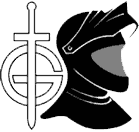The History and Origins of European Military Close Combat
It is true that every early civilisation had methods of fighting but the history outlined here is of a structured warlike military nature. Ancient Egyptians practiced close combat over 6000 years ago. The Celts records revealed their practices of close combat date back a century before Bhodidharma regarded as the founder of kung fu. Competitive forms of deadly combat were being contested at the ancient Olympics as early as 688 BC. Training at this point in time was structured and evidence can be found of ancient Celtic engravings and etchings showing combat training in various armed and unarmed practises as well as performance enhancing exercises. Christianity destroyed much of the records of ancient European close combat in belief that it was non-Christian. The ancient Europeans had the ultimate test of effectiveness in life or death competitive battles. Swords being utilised in combat had been depicted in detailed drawings as early as 1200 BC. For over 300 years the Roman Empire conducted Gladialanical combat where combatants would kill or be killed.
It was the advance of weaponry they eventually saw the decline of many unarmed practices. European close combat has largely been forgotten due to secrecy it was surrounded by through history. Ancient artefacts like challis's and sword scabbards dated back to the fourth century BC and depict soldiers practising close combat. Greek Pankration dates back to the first Olympics in the seventh century BC.
The Galation Celts were employed in early close combat skills to combat the Greeks as they fought their way through Greece into Anatolia. Many Greek soldiers who trained in early close combat and fought Galations were Celtic mercenaries. When Alexandra the Great's Empire extended to India the considered birthplace of eastern martial arts his soldiers left behind the basics for the development of the eastern martial arts. These early European warring factions practiced every detail of close combat as their lives depended upon the skills and training. The early Europeans produced countless weapons to supersede enemy weaponry and fighting skills.
British Captain William Fairbairn considered the grandfather of European modern military close combat was proficient and well versed in the early European methods of military close combat and combined with his US counterpart Colonel Rex Applegate they were given the responsibility by their prospective governments to learn all they could of fighting methods of the world both enemy and allied.
Fairbairn's role was to analyse the methods and practises from the late 18 hundreds onwards and as such he became well versed and proficient in many Eastern systems giving him a vast knowledge in the mastery of fighting arts of the world. This insured his programmes; practices and principles were the best for real combat. It was with this vast wealth of knowledge that Fairbairn, Sykes and Applegate trained the most elite operatives of the Second World War.
With military close combat's history dating back to the ancient Europeans and the Celtic warriors through to the great wars and all conflicts until the present, military close combat has a history second to none of success in conquering all other enemy fighting systems and is a secret fighting system in its own right.
The work of the evolutionary pioneers is being continued today by Geoff Todd and his allied expert colleagues.
